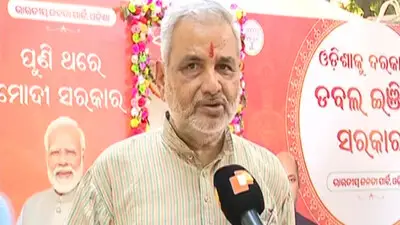Recommended Stories
At a time when illegal sale of liquor and brown sugar is going on unabated along with demand for removal of liquor shops from villages, the Odisha government’s move to ban the use of ganja at all Lord Shiva shrines across the State has raised many eyebrows.
Acting on the request made by spiritual leader Padma Shri recipient Baba Balia, the Odia Language Literature and Culture Department had last month written a letter to all district Collectors and Superintendents of Police, asking them to take necessary steps to stop the use of the contraband on the promises of Lord Shiva shrines across the State.
However, the government has been drawing flak for its crackdown on the use of ganja. This is because, five years ago, the same government was contemplating legalising the use of cannabis. On one hand, the State government is accused of encouraging the sale of liquor while on the other hand, it is taking action against the use of ganja at shrines. It has since been alleged that the government’s aim behind this ban is to earn more revenue from the sale of liquor.
It is worth mentioning here that Odisha was among those states that introduced home delivery of liquor during the time of Covid-19 pandemic. During the period, the revenue collection increased substantially.
As per columnist Dilip Sabat, in the year 2022-23, the Odisha government earned a total of Rs 8,767.36 crore excise revenue from liquor sale, which was much higher than the set target. The State government has now set a target to achieve a target of Rs 10,000 crore excise revenue.
Sabat further said, in the 2022-23 budget, the government had set the target of excise revenue at Rs 6,495. Later, it was revised to Rs 6,882 crore. But, at the end of the fiscal, the revenue earned was 27 percent more than the revised target. In the last two years, Odisha registered a hike of 10 to 15 percent.
In 2021-22 fiscal, the State had collected a revenue of Rs 7,628 crore- Rs 5528 crore excise revenue and Rs 2100 crore from VAT on liquor. Similarly, in 2020-21 fiscal, the State had collected Rs 4053 crore from excise and Rs 1346 from VAT.
For 2023-24 fiscal, the government has set a target of revenue collection of Rs 7,740 crore. Since there is a possibility of hiking the target to more than Rs 8,000 crore, the government has devised an extensive excise plan, he claimed.
Since every year, the excise revenue has been registering an increase of 20 percent, the government is said to be hoping that the target would touch Rs 10,000 crore.
On the other hand, the government has been cracking its whip on the ganja and its plantation. According to a source, between September 2020 and March 2021 alone, ganja plantation worth Rs 5750 crore was destroyed. Odisha police achieved a record by destroying ganja plantation grown on 23,000 acres.
It is said that a minimum of 1000 ganja plants can be grown on one acre of land. And from a single plant, ganja measuring between 300 grams to 500 grams is collected. So, from an acre of plantation, around a quintal of ganja is produced.
As per Sabat, cannabis is not used only as a narcotic substance. While a small portion of it is used as narcotic, a lion portion of it is used in manufacturing medicine for diseases like Cancer, Heart problems, Asthma etc. A dress prepared from substance of marijuana is claimed to have anti-infection properties which is why the dress is in demand in the world market.
Once, opinions of different countries were sought on whether marijuana is a serious narcotic drug. On the basis of this, the United Nations took an important decision to delete hemp from the list of most harmful drugs. Most importantly, India along with more than 27 countries had voted in its favour.
Moreover, more than 50 countries are using hemp as medicine to cure various diseases. In some states of the US and Canada, ganja use has been permitted. While many countries are contending that hemp is injurious to health, there are also such countries that are regarding hemp as nature’s boon for its inherent medicinal properties.
While several countries are decriminalizing hemp and it is increasingly being used to cure diseases, in Odisha, it has been banned on Lord Shiva shrines. It has been argued that while the government is doing next to nothing to check the flow of liquor in rural areas, its market is expanding. Most road mishaps are caused by tipsy drivers. But it is hardly seen in case of hemp users. Crimes, family violence and poor financial condition can also be attributed to the consumption of alcohol.
Yet, nothing has been done to check the selling of liquor.
The government is also allegedly closing its eyes to the mushrooming trade of brown sugar. Youths are falling victim to this net of white poison. In October 2022, in a major haul, police arrested six drug smugglers in Balasore and recovered 10 kilogram of brown sugar worth Rs 11 crore from them. While such incidents are being reported on a regular basis, the government’s cracking whip on ganja has raised several questions.













